Hemoglobin A1c shows your average blood sugar over the past 2–3 months, guiding diabetes screening and care.
Securely stored in EU
Cancel anytime
Test 100+ biomarkers
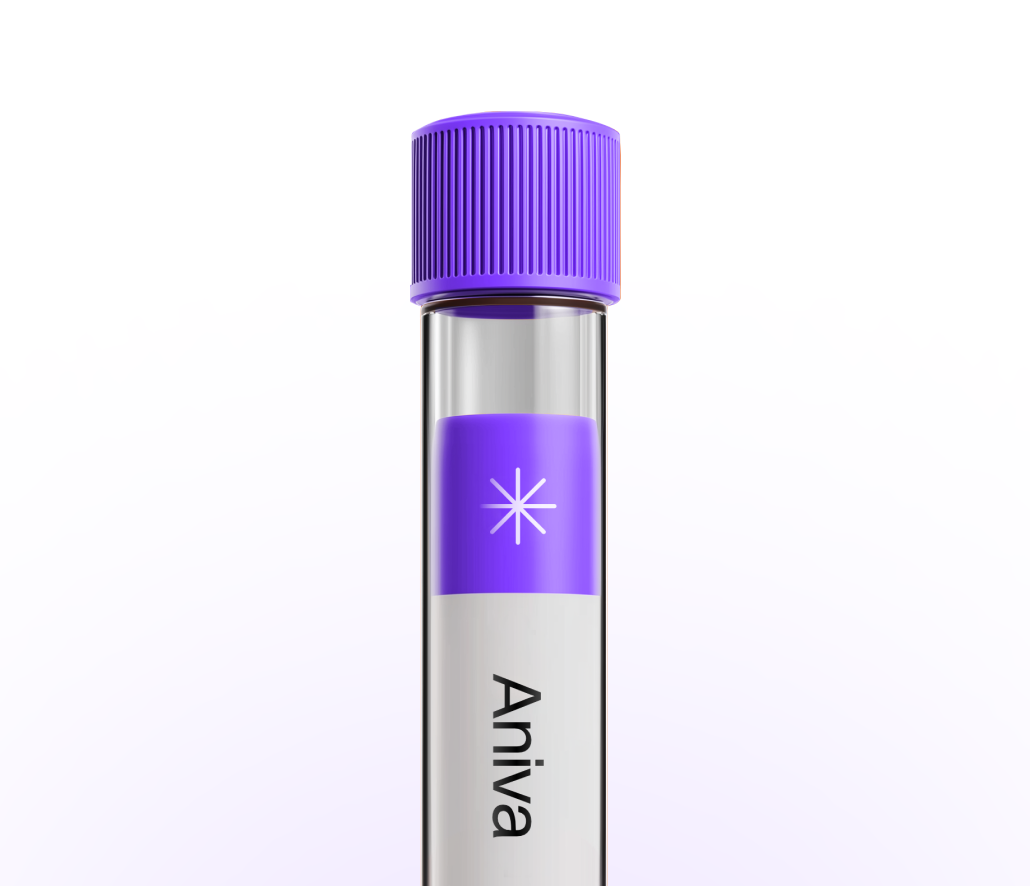
Less than 5 minutes waiting time. One
simple test at one of our 20+ locations.
Get your lab reports within one week.
Accessible on our app and per PDF.
All your health records stored
in a single, convenient place.

Clinicians use HbA1c to screen for, diagnose, and monitor diabetes or prediabetes. It reflects long-term glucose control and helps guide medicines, nutrition, and activity plans. It is also useful if you have risk factors or to check how your plan is working. You can test this marker with Aniva across Germany and Finland.
Clinicians use HbA1c to screen for, diagnose, and monitor diabetes or prediabetes. It reflects long-term glucose control and helps guide medicines, nutrition, and activity plans. It is also useful if you have risk factors or to check how your plan is working. You can test this marker with Aniva across Germany and Finland.
High: A higher A1c means your average blood sugar has been elevated, which can be consistent with prediabetes or diabetes and higher long-term risk. Consider repeat testing or pairing with a fasting plasma glucose to confirm, and discuss small, steady changes with your clinician.
Low: A lower A1c can reflect tight glucose control, but may also appear low if red blood cells turn over quickly, after blood loss or transfusion, or with some medicines. If the number doesn’t match your glucose readings, ask about checking fructosamine or re-testing in about three months.
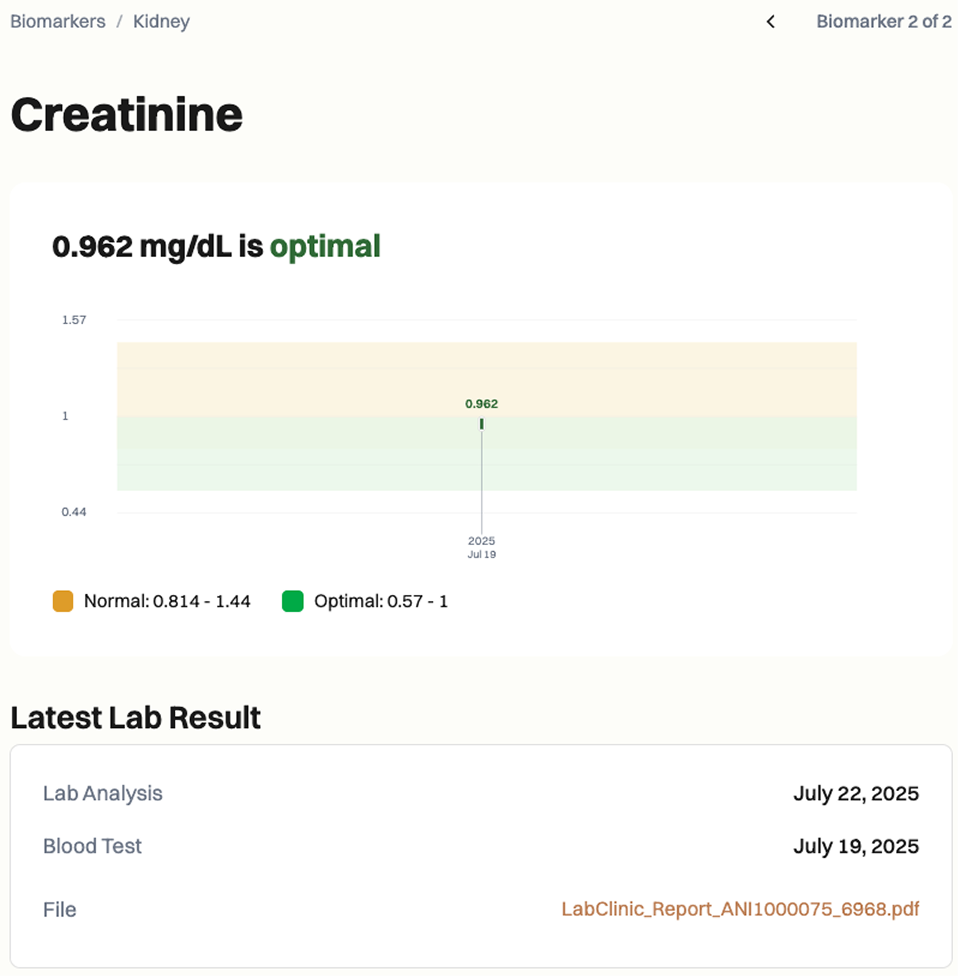
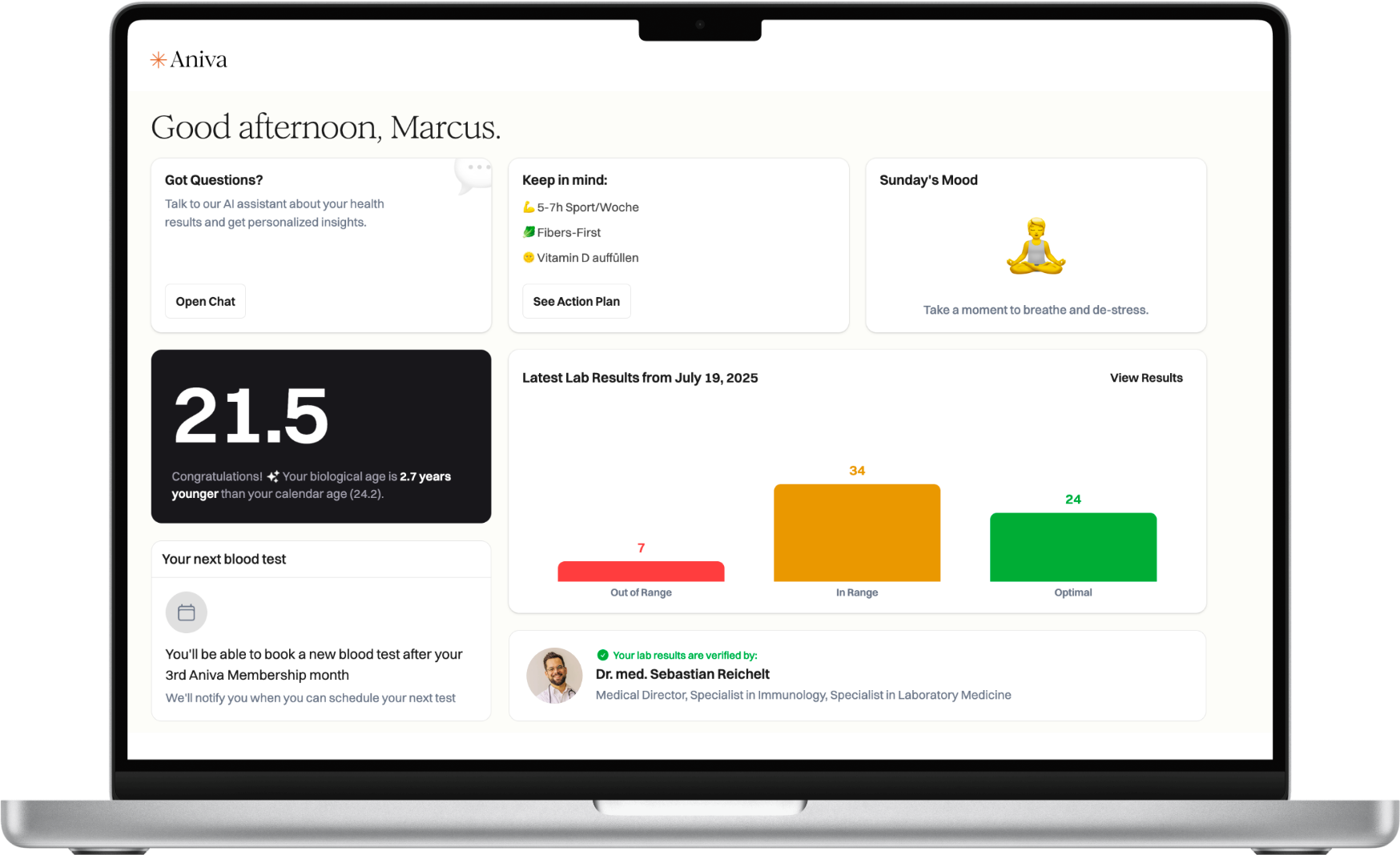
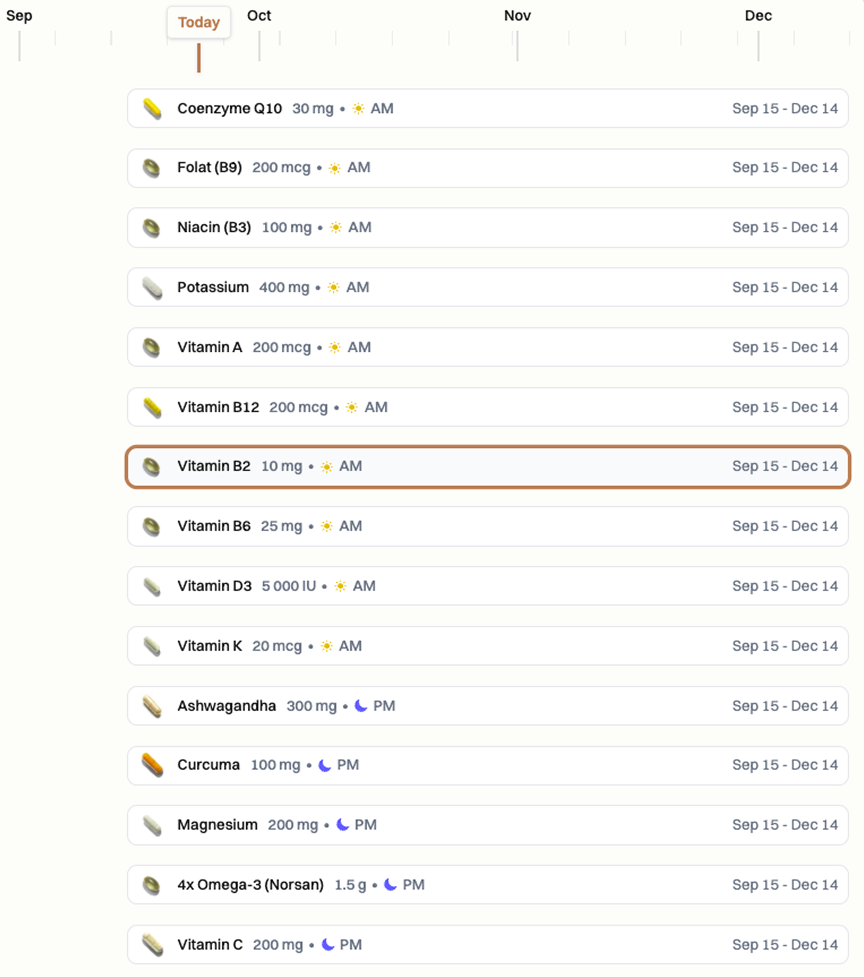
Common factors that can skew HbA1c include hemoglobin variants, iron deficiency or hemolytic anemia, recent blood loss or transfusion, pregnancy, advanced kidney or liver disease, and medicines that affect red blood cells (for example, erythropoietin, dapsone, or hydroxyurea). High-dose vitamin C or E, alcoholism, and some HIV therapies can also interfere with certain methods. Tell the lab if you have a known hemoglobin variant.
Special situations (when to confirm or adjust): after transfusion, during pregnancy, with significant anemia, or in advanced kidney disease—confirm with plasma glucose, an oral glucose tolerance test, or consider fructosamine/glycated albumin if advised.
What does my HbA1c mean in plain terms? It shows your average blood sugar over the last few months. Higher values mean higher average glucose.
Do I need to fast for this test? No. You can test at any time of day without fasting.
How often should I check HbA1c? Many people repeat it about every 3 months when care is changing, and every 6 months when stable. Your clinician may tailor this.
What can affect my result? Anemia, hemoglobin variants, recent blood loss or transfusion, kidney or liver disease, pregnancy, and some medicines or supplements can shift results.
How long do results take? Most labs report HbA1c within 1–3 business days.
What should I discuss with my clinician? Bring symptoms, glucose logs or CGM data, all medicines and supplements, and any history of anemia or hemoglobin variants.

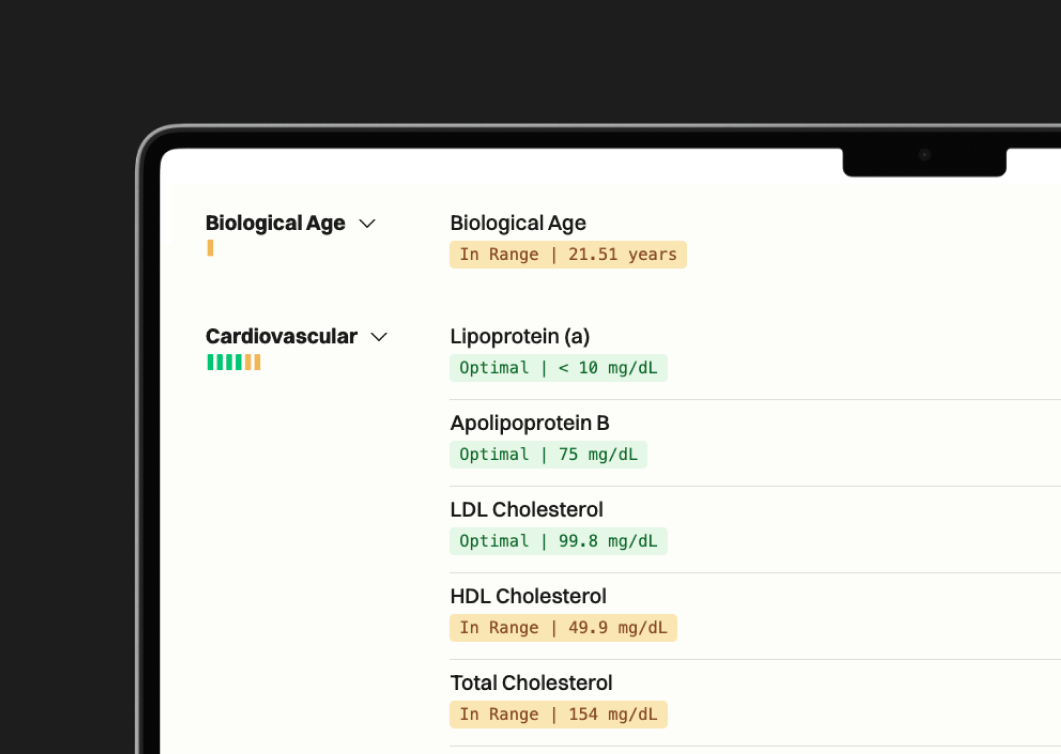
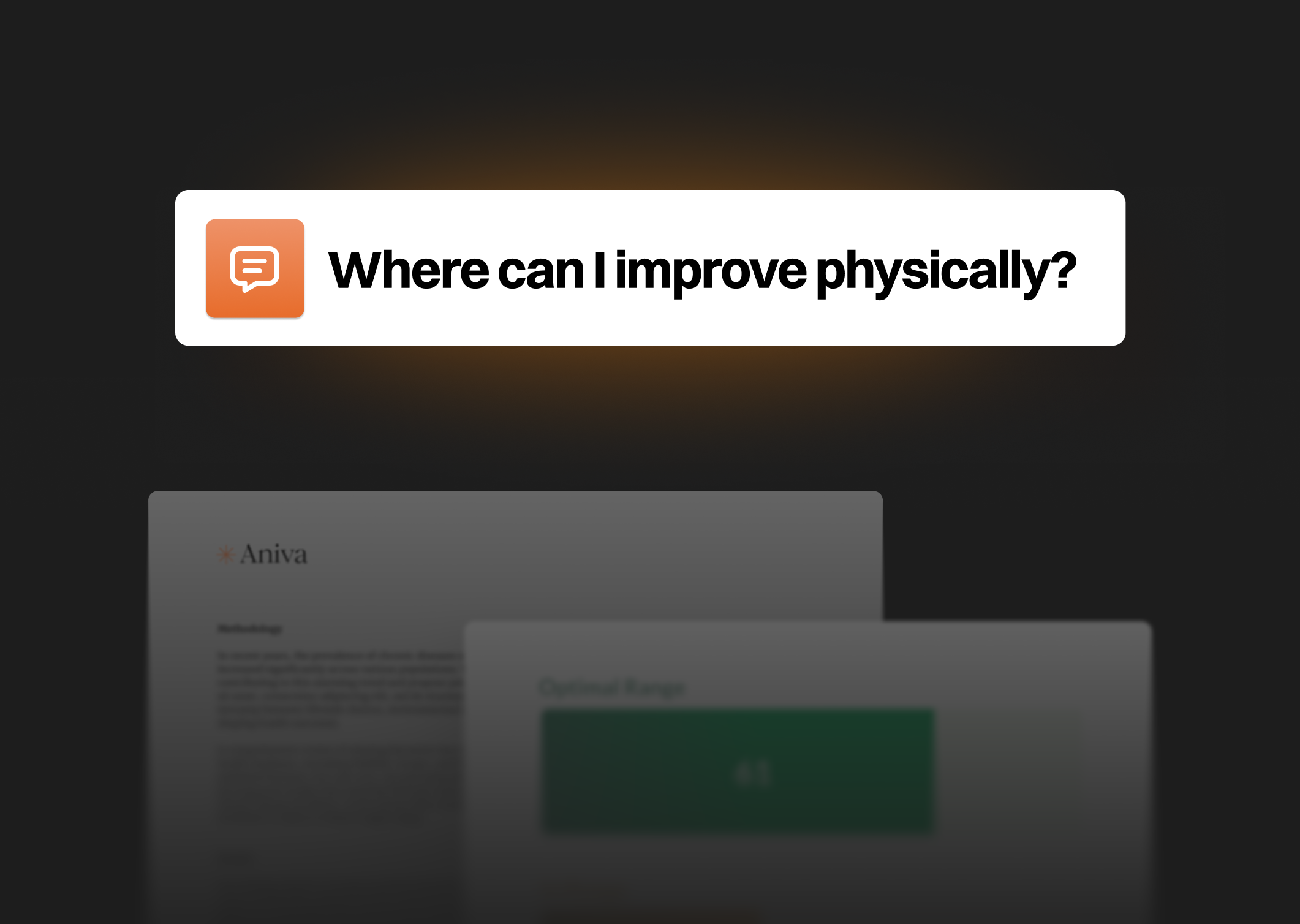
One annual blood test (100+ biomarkers)
Clinician-reviewed insights
Personalized action plan
Access to our AI Concierge
Access to curated products


63%
44%
70%